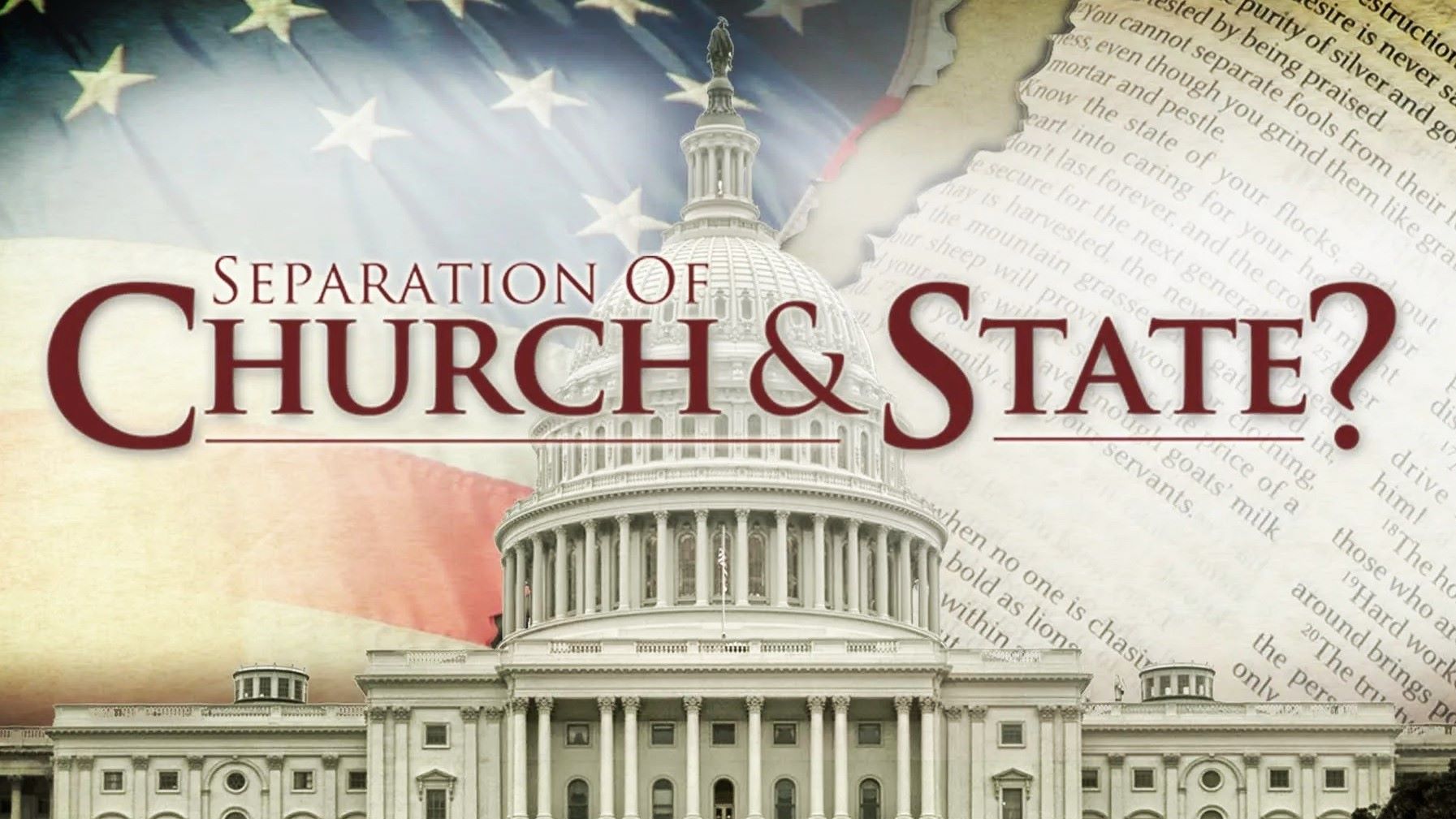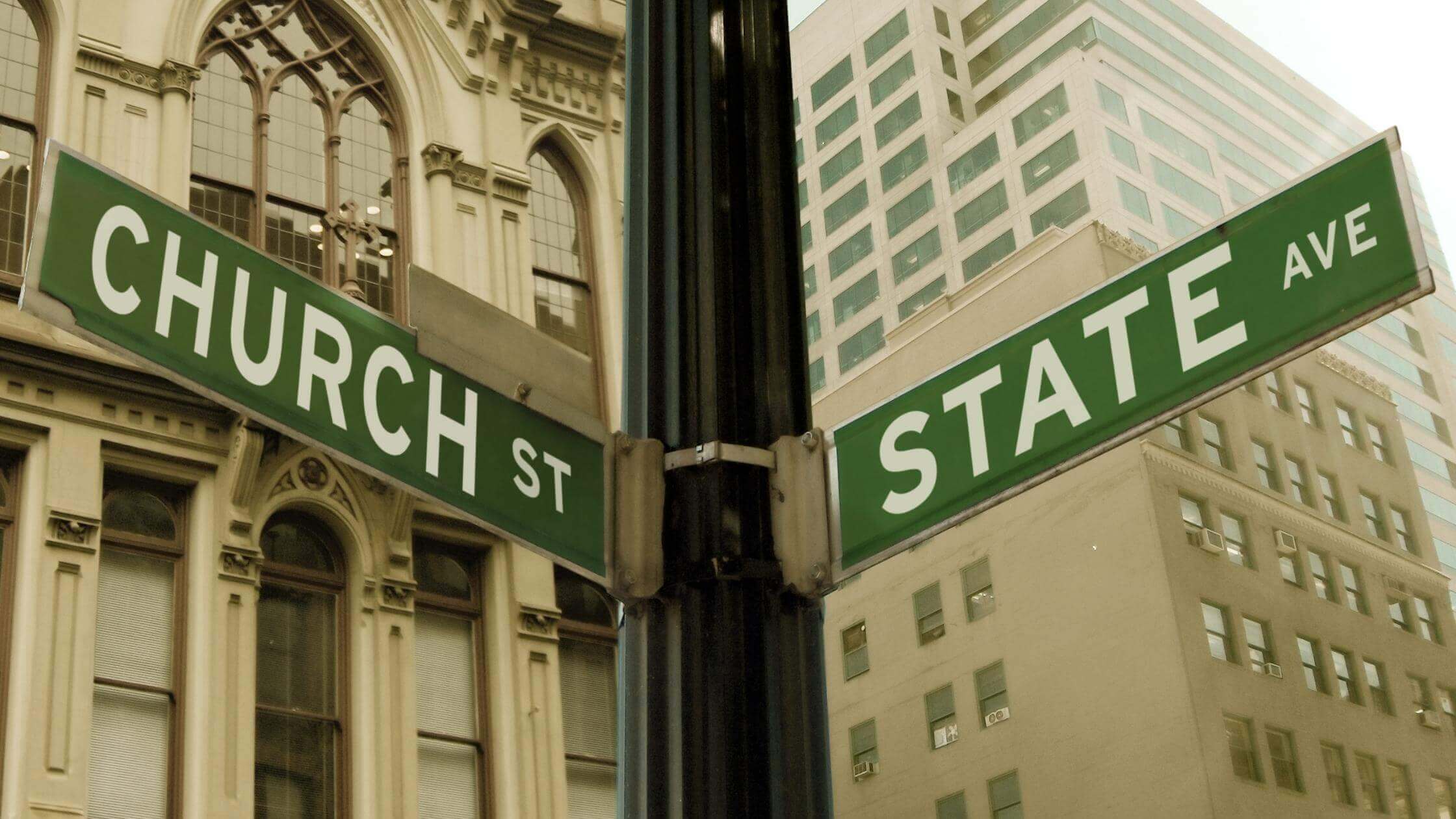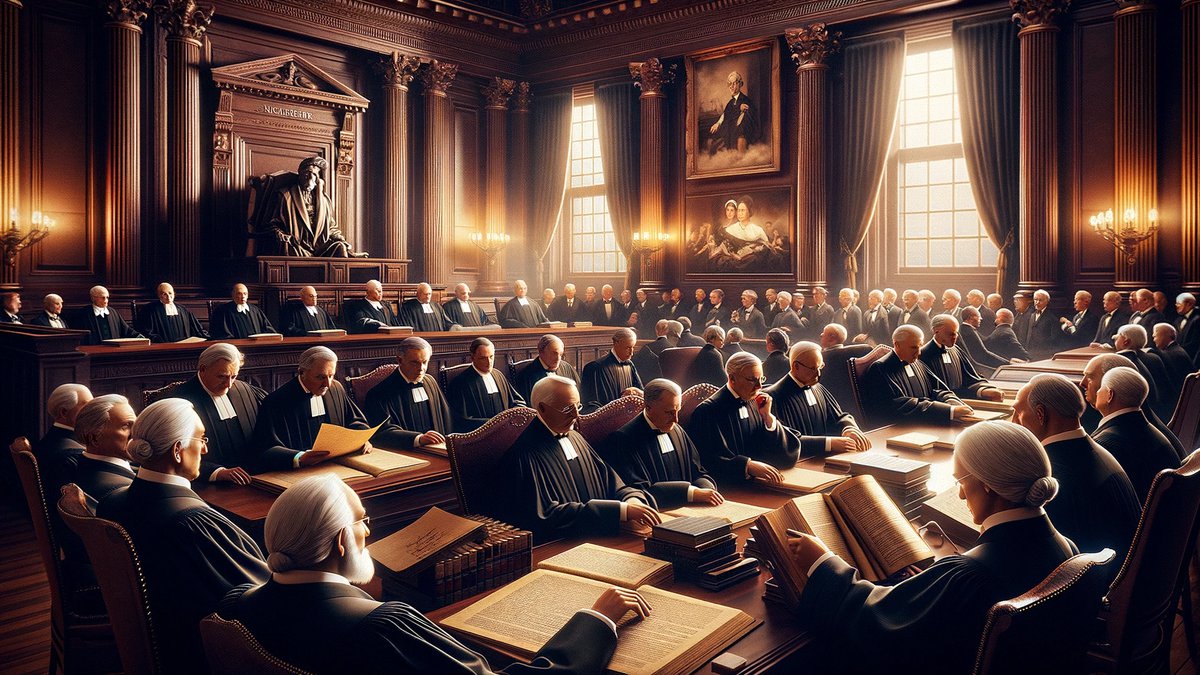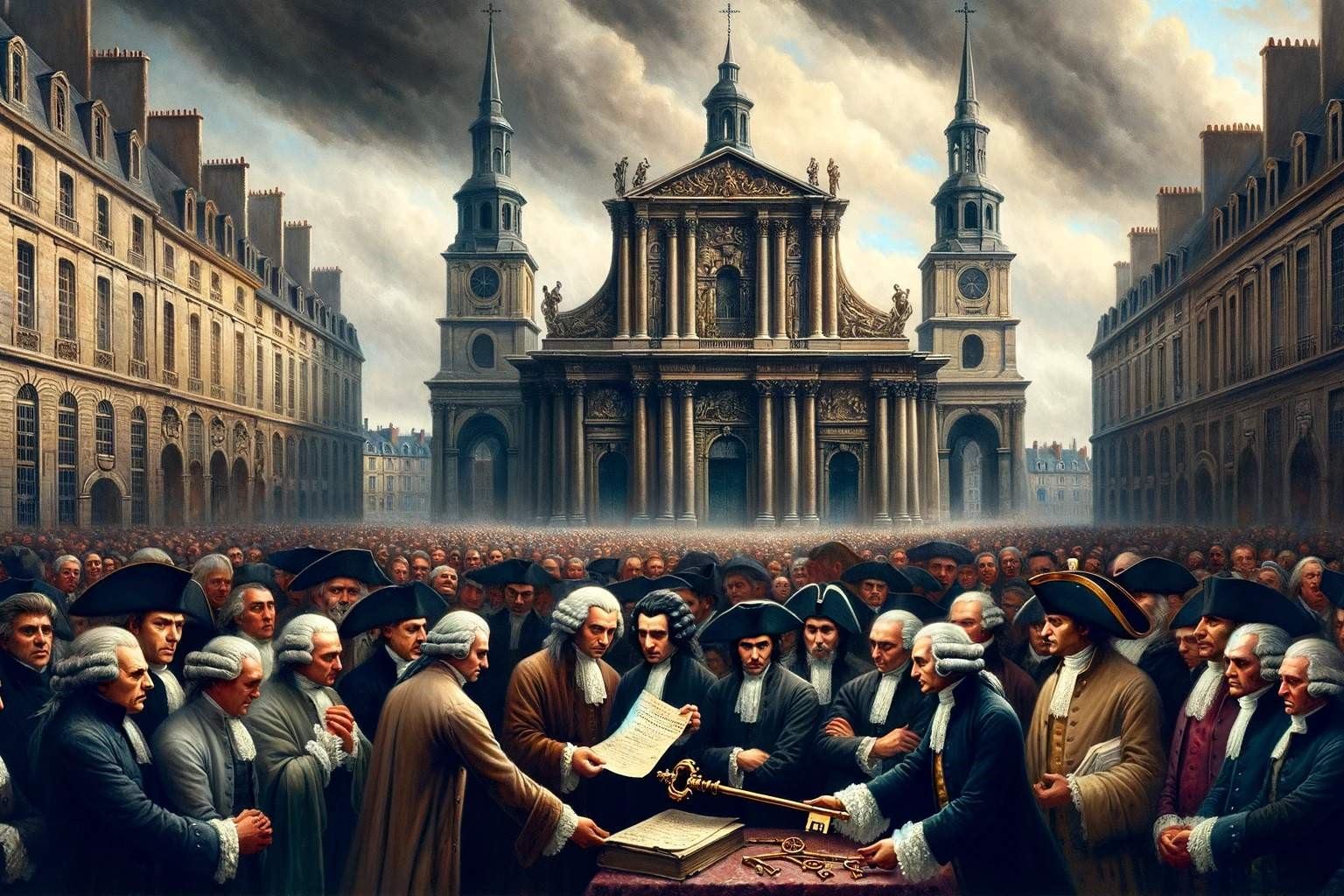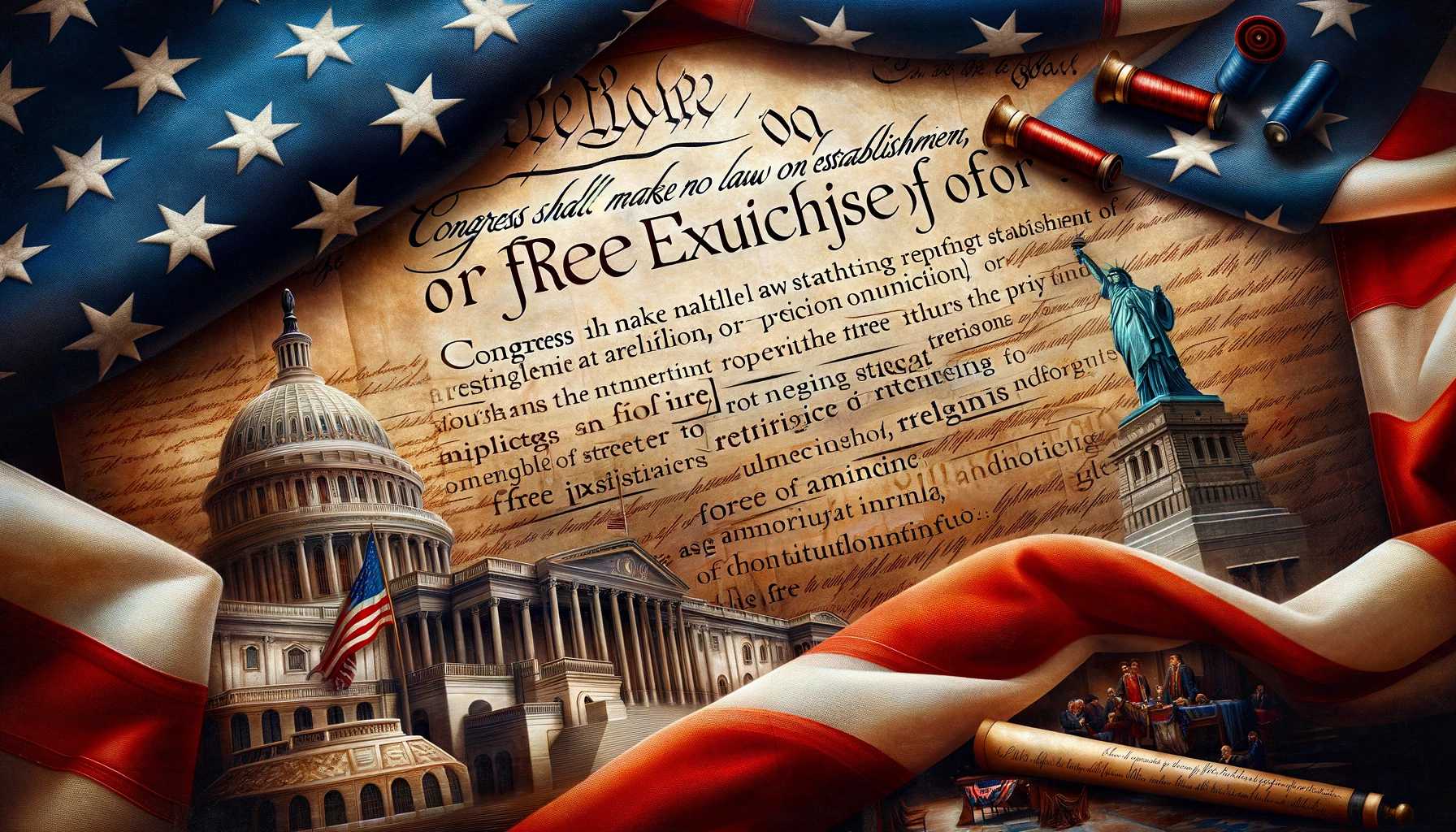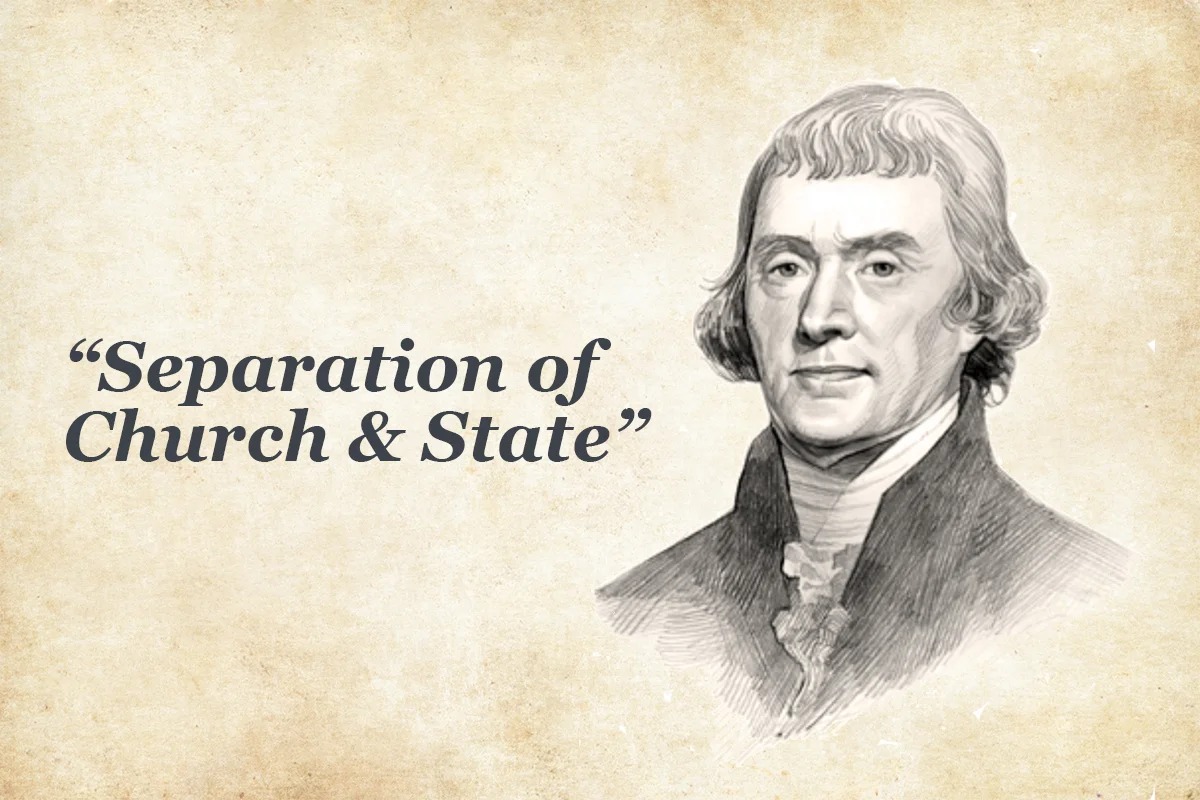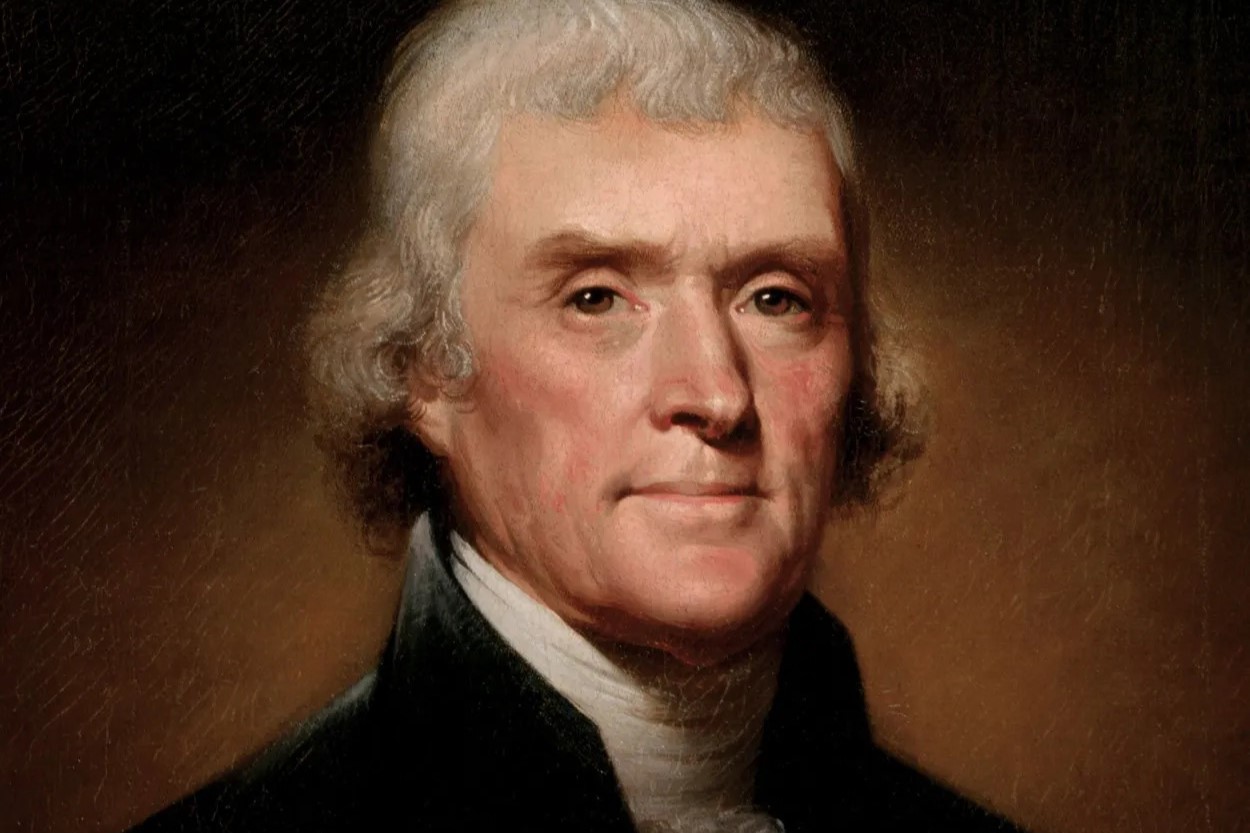Home>Theology and Spirituality>Which State Had The Clearest Separation Of Church And State
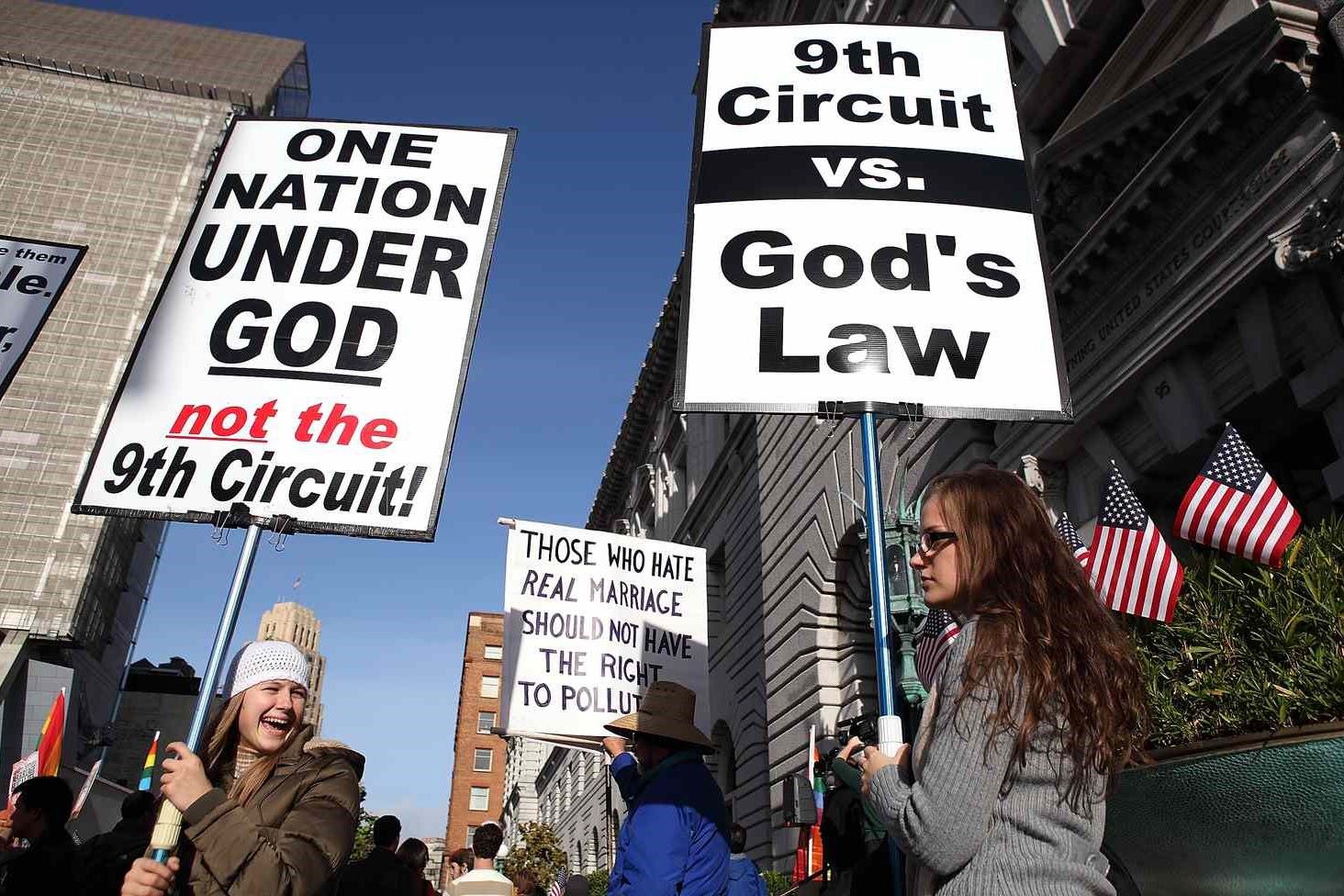

Theology and Spirituality
Which State Had The Clearest Separation Of Church And State
Published: February 11, 2024
Jason DeRose, Managing Editor at Christian.net, uses his expertise in religion and journalism to deepen understanding of faith's societal impacts. His editorial leadership, coupled with a strong academic background, enriches the platform’s diverse content, earning him recognition in both journalism and religious circles.
Discover which state had the clearest separation of church and state and explore the intersection of theology and spirituality in American history. Uncover the impact of religious freedom on the development of the nation.
(Many of the links in this article redirect to a specific reviewed product. Your purchase of these products through affiliate links helps to generate commission for Christian.net, at no extra cost. Learn more)
Table of Contents
Introduction
The concept of the separation of church and state has been a fundamental principle in the governance of many nations, including the United States. This principle, rooted in the First Amendment of the U.S. Constitution, aims to ensure that religious institutions and governmental bodies remain independent of each other, thereby preventing undue influence or interference. The historical context and interpretation of this principle have evolved over time, shaping the legal and social landscape of the nation.
In this article, we will delve into the historical background of the separation of church and state, examining its significance and impact on society. Furthermore, we will explore the legal framework established by the Establishment Clause and the Free Exercise Clause of the First Amendment, which serve as cornerstones for ensuring religious freedom and preventing the establishment of a state religion.
Additionally, we will analyze case studies of states that have demonstrated a clear separation of church and state, highlighting the factors that have contributed to this distinction. By examining these examples, we can gain valuable insights into the practical application of the separation principle and its implications for governance and individual liberties.
Moreover, we will discuss the factors that have historically influenced the clarity of separation between religious institutions and governmental entities. By understanding these factors, we can better comprehend the complexities and nuances involved in maintaining a robust separation of church and state.
As we embark on this exploration, it is essential to recognize the profound impact of the separation of church and state on the fabric of American society. By examining its historical evolution, legal underpinnings, and practical manifestations, we can gain a deeper appreciation for the significance of this principle in upholding religious freedom and preserving the integrity of governmental institutions.
Historical Background of Separation of Church and State
The historical roots of the separation of church and state can be traced back to the early development of Western political thought and the evolution of religious institutions. In ancient civilizations, the intertwining of religious authority and political power was a common phenomenon, with rulers often claiming divine sanction for their governance. However, as societies progressed and intellectual movements such as the Enlightenment took hold, a paradigm shift began to emerge.
The Enlightenment era, spanning the 17th and 18th centuries, brought about a reevaluation of the relationship between religion and government. Thinkers and philosophers of this period, including John Locke and Voltaire, advocated for the delineation of secular and religious spheres, emphasizing the importance of individual liberty and the autonomy of the state from ecclesiastical control.
The concept of the separation of church and state gained significant traction during the formation of the United States. Influenced by Enlightenment ideals and seeking to establish a society free from the religious persecution experienced in Europe, the framers of the U.S. Constitution enshrined the principle of religious freedom and the prohibition of a state-sponsored religion. This commitment was articulated in the First Amendment, which states, "Congress shall make no law respecting an establishment of religion, or prohibiting the free exercise thereof."
The historical backdrop of religious diversity in the American colonies further underscored the necessity of maintaining a clear separation between religious institutions and governmental authority. The experiences of religious minorities, such as the Quakers, Baptists, and Catholics, who faced discrimination in colonial America, informed the framers' intent to safeguard religious pluralism and prevent the dominance of any single faith tradition in matters of governance.
Over time, the interpretation and application of the separation principle have been shaped by landmark legal cases, scholarly discourse, and societal transformations. The historical background of the separation of church and state reflects a profound commitment to upholding religious freedom, fostering social harmony, and preserving the autonomy of governmental institutions from religious influence.
As we delve into the historical evolution of this principle, it becomes evident that the separation of church and state is deeply intertwined with the foundational values of liberty, equality, and the pursuit of a just and inclusive society.
The Establishment Clause and Free Exercise Clause
The Establishment Clause and Free Exercise Clause, collectively known as the Religion Clauses, form the cornerstone of the First Amendment's protection of religious freedom in the United States. The Establishment Clause prohibits the government from establishing or endorsing a state religion, while the Free Exercise Clause safeguards individuals' rights to practice their chosen faith without governmental interference.
The Establishment Clause serves as a bulwark against the institutionalization of a specific religion by the state, ensuring that no single faith tradition receives preferential treatment or official sanction. This foundational principle not only upholds religious pluralism but also safeguards the autonomy of religious institutions from state control. Through the Establishment Clause, the framers of the Constitution sought to prevent the historical entanglement of religious and political authority, thereby fostering a society where individuals are free to embrace diverse belief systems without fear of persecution or marginalization.
Complementing the Establishment Clause, the Free Exercise Clause reinforces the protection of individual religious liberties by prohibiting the government from unduly burdening or obstructing the practice of one's faith. This provision empowers individuals to worship, observe religious rituals, and adhere to their beliefs without facing discriminatory regulations or infringements on their religious conscience. The Free Exercise Clause reflects the framers' commitment to honoring the sanctity of personal faith and ensuring that citizens are not compelled to compromise their religious convictions due to governmental actions.
The interplay between the Establishment Clause and the Free Exercise Clause has been the subject of extensive legal interpretation and adjudication, shaping the jurisprudence surrounding religious freedom in the United States. Court cases such as Lemon v. Kurtzman and Employment Division v. Smith have contributed to delineating the boundaries of permissible governmental involvement in religious matters while safeguarding individuals' rights to freely exercise their faith.
In essence, the Establishment Clause and Free Exercise Clause embody the enduring commitment of the United States to uphold religious freedom as a fundamental human right. These constitutional provisions underscore the nation's dedication to fostering a society where diverse religious beliefs are respected, and individuals are empowered to live out their faith without undue interference from the government. The delicate balance struck by the Religion Clauses reflects the profound significance of religious liberty in the fabric of American democracy, serving as a beacon of hope for individuals seeking to express their spirituality freely and authentically.
Case Studies of States with Clear Separation of Church and State
California
California stands as a prominent example of a state with a clear separation of church and state. The state's commitment to upholding this principle is evident in various aspects of its governance and legal framework. California's public institutions, including schools and government offices, maintain a strict neutrality concerning religious matters, ensuring that no particular faith tradition receives preferential treatment or endorsement. Moreover, the state's laws and policies consistently uphold the rights of individuals to practice their chosen faith without encountering undue influence or discrimination from governmental entities.
New York
New York exemplifies a robust separation of church and state, characterized by a steadfast adherence to religious neutrality in public affairs. The state's educational system, in particular, upholds the principle of secular education, refraining from promoting specific religious doctrines or practices within its public schools. Additionally, New York's legal and legislative landscape reflects a commitment to safeguarding religious freedom and preventing the entanglement of religious institutions with governmental authority. This commitment is exemplified in the state's proactive measures to ensure that individuals of diverse faith backgrounds are accorded equal treatment and protection under the law.
Texas
Despite its rich religious diversity, Texas has demonstrated a clear separation of church and state through its governance and legal structures. The state's constitution and legal precedents underscore the imperative of maintaining religious neutrality in public spheres, thereby fostering an environment where individuals are free to exercise their faith without encountering institutional bias or coercion. Texas' commitment to upholding the separation principle is evident in its approach to legislative matters, ensuring that laws and policies are crafted with due regard for religious pluralism and the autonomy of religious institutions.
Massachusetts
Massachusetts serves as a compelling case study of a state with a clear separation of church and state, rooted in a historical legacy of religious tolerance and pluralism. The state's commitment to upholding this principle is reflected in its legal and judicial systems, which consistently prioritize the protection of individual religious liberties and the prevention of state-sponsored religious favoritism. Massachusetts' public institutions and civic spaces maintain an inclusive and neutral stance on religious matters, fostering an environment where individuals from diverse faith traditions can coexist harmoniously without encountering institutionalized bias or discrimination.
Washington
Washington state exemplifies a robust commitment to the separation of church and state, underpinned by a legal and social framework that upholds religious neutrality and individual freedom of conscience. The state's public policies and administrative practices reflect a steadfast dedication to preventing the establishment of a state religion and ensuring that governmental entities refrain from endorsing or inhibiting specific religious beliefs. Washington's approach to religious freedom and governmental neutrality serves as a model for fostering a society where individuals are empowered to express their spirituality authentically, free from undue influence or coercion from the state.
These case studies offer valuable insights into the practical manifestations of the separation of church and state within diverse state contexts, highlighting the importance of upholding religious freedom and preventing the entanglement of religious institutions with governmental authority.
Factors Contributing to Clear Separation
Several key factors contribute to the clear separation of church and state within a given jurisdiction, shaping the legal, social, and cultural landscape to uphold the autonomy of both religious institutions and governmental entities.
Legal Precedents and Judicial Interpretation
The interpretation of constitutional provisions, including the Establishment Clause and the Free Exercise Clause, plays a pivotal role in delineating the boundaries of permissible interaction between religious and governmental spheres. Landmark court decisions, such as Everson v. Board of Education and Lemon v. Kurtzman, have established legal precedents that reinforce the imperative of maintaining a clear separation. Judicial interpretation of these precedents serves to guide legislative and administrative actions, ensuring that laws and policies align with the constitutional mandate of religious neutrality and individual freedom of conscience.
Legislative Safeguards and Policy Frameworks
The enactment of legislation and the formulation of public policies that prioritize religious neutrality and non-discrimination are instrumental in fostering a climate of clear separation. Legislative safeguards, such as statutes prohibiting the establishment of a state religion and affirming the rights of individuals to freely exercise their faith, serve as bulwarks against the encroachment of religious influence in governmental affairs. Additionally, policy frameworks within areas such as education, healthcare, and civil rights are designed to uphold the principle of religious pluralism and prevent preferential treatment based on religious affiliation.
Educational Initiatives and Civic Engagement
Educational initiatives aimed at promoting civic literacy and fostering an understanding of the separation of church and state contribute to a culture that values religious freedom and governmental autonomy. By equipping individuals with knowledge of constitutional principles and the historical significance of religious freedom, educational institutions play a crucial role in cultivating a citizenry that appreciates the importance of maintaining a clear delineation between religious and governmental domains. Furthermore, civic engagement efforts that advocate for the preservation of religious neutrality in public discourse and policymaking contribute to the reinforcement of the separation principle.
Cultural Diversity and Interfaith Dialogue
The celebration of cultural diversity and the promotion of interfaith dialogue within society foster an environment where individuals from varied religious backgrounds coexist harmoniously while respecting the autonomy of religious and governmental institutions. Embracing cultural pluralism and engaging in constructive interfaith conversations underscore the value of religious freedom and underscore the importance of preventing the dominance of any single religious perspective in public life.
Administrative Accountability and Oversight
Robust mechanisms for administrative accountability and oversight serve to ensure that governmental entities adhere to principles of religious neutrality and refrain from engaging in actions that could be perceived as endorsing or inhibiting specific religious beliefs. By upholding transparency and accountability in the implementation of policies and programs, governmental bodies can demonstrate a steadfast commitment to maintaining a clear separation of church and state.
These factors collectively contribute to the cultivation of a societal ethos that upholds the clear separation of church and state, safeguarding religious freedom and the autonomy of governmental institutions while fostering a climate of inclusivity and respect for diverse belief systems.
Conclusion
In conclusion, the principle of the separation of church and state stands as a cornerstone of American democracy, reflecting a profound commitment to upholding religious freedom, fostering social harmony, and preserving the autonomy of governmental institutions. The historical evolution of this principle, rooted in the Enlightenment era and enshrined in the First Amendment, underscores its enduring significance in shaping the legal, social, and cultural landscape of the United States.
The Establishment Clause and Free Exercise Clause, encapsulated within the First Amendment, serve as bulwarks against the institutionalization of a specific religion by the state and safeguard individuals' rights to practice their chosen faith without governmental interference. The delicate balance struck by the Religion Clauses reflects the nation's dedication to fostering a society where diverse religious beliefs are respected, and individuals are empowered to live out their faith without undue interference from the government.
Through case studies of states such as California, New York, Texas, Massachusetts, and Washington, we have gleaned valuable insights into the practical manifestations of the separation of church and state within diverse state contexts. These examples underscore the importance of upholding religious freedom and preventing the entanglement of religious institutions with governmental authority, thereby fostering a climate of inclusivity and respect for diverse belief systems.
Several key factors contribute to the clear separation of church and state, including legal precedents and judicial interpretation, legislative safeguards and policy frameworks, educational initiatives and civic engagement, cultural diversity and interfaith dialogue, and administrative accountability and oversight. These factors collectively contribute to the cultivation of a societal ethos that upholds the clear separation of church and state, safeguarding religious freedom and the autonomy of governmental institutions while fostering a climate of inclusivity and respect for diverse belief systems.
As we reflect on the historical significance and contemporary relevance of the separation of church and state, it becomes evident that this principle is not merely a legal doctrine but a testament to the nation's enduring commitment to liberty, equality, and the pursuit of a just and inclusive society. By upholding the separation of church and state, the United States reaffirms its dedication to fostering a society where individuals of all faiths, or none, can coexist harmoniously, free from the specter of religious coercion or governmental favoritism.
